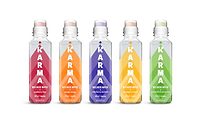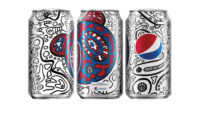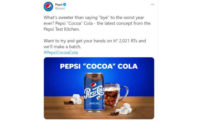Coca-Cola spreading happiness through technology

The history of The Coca-Cola Co. is integrally tied in with the iconic marketing campaigns that made Coca-Cola the worldwide brand it is today. Although technological advances are changing the way it interacts with consumers, the company still sees a common goal for its outreach, explains Clyde Tuggle, senior vice president of global public affairs and communications for The Coca-Cola Co.
“In a sense, social media, we talk a lot about that, and it’s always been around,” Tuggle says. “Connecting with people isn’t new, it’s only the means that have changed. We’ve evolved the way we interact with customers and consumers, recognizing that technology is just the vehicle to get you there — it’s still about making human connections. The great thing for us is that Coca-Cola has always been about bringing people together.”
The company traces its origins to pharmacies, which Tuggle explains were the social media of the late 19th century, “that’s where people went to do what they do now in the realm of the social media — to connect, to communicate, to share stories, to be part of, if you will, a community,” he says.
Coca-Cola has gone from “pharmacy to Facebook,” as Tuggle says, through a careful embrace of social media. The Coca-Cola Facebook page was not created by the company; it was created by two friends who got together to enjoy a Coca-Cola and recognized the brand’s potential to bring people together. The Coca-Cola Co. has since partnered with the creators of the site and embraced the notion that the fan page is about sharing personal experiences with the brand, says Joe Tripodi, chief marketing and commercial officer of The Coca-Cola Co.
The Coca-Cola Facebook page has 26 million fans and averages 100,000 new fans each week, Tripodi says. The company operates the page under a “fans first philosophy” and recognized that interaction on Facebook has created a new sought-after quality from its consumers.
“Loyalty used to be at the top, but what’s really at the top of the pyramid is advocacy,” Tripodi explains. “If you can get people advocating for you as a company and as a brand, then that’s the most positive thing you can get.”
An example of that advocacy is how the community controls the dialogue on the Facebook page. Wendy Clark, senior vice president of integrated marketing communications and capabilities, explains that The Coca-Cola Co. takes a fairly quiet stance on its Facebook page.
“We do put content out there and we try to stimulate discussion and dialogue, but for the most part, it is the dialogue of the community,” Clark says. “And by the way, people will come on our Facebook wall and write, ‘I love Pepsi,’ and you know what? That’s their opinion and they are entitled to it. We do not take that down. Now what tends to happen in that situation is that the community rises up and tells that person — sometimes politely, sometimes not — that they’re on the wrong page.”
The connection that Facebook provides presents a powerful opportunity for The Coca-Cola Co. as it seeks to double its servings from 1.7 billion each day worldwide to
3 billion daily global servings. Each of the brand’s 26 million fans on Facebook have an average network of 130 friends each, which networks Coca-Cola’s page to 585 million people, which is almost the entire user base of the social media site, Clark says.
“The mandate for us becomes developing content that’s shareable,” she says. “If we do our job well and put out great content into these social networks, to these fans that are already part of our individual social network, if we do that well, that content travels and that to me, can lead to some very significant numbers.”
In addition to Facebook, The Coca-Cola Co. also is active on other social media sites, such as Flickr, Twitter and YouTube. It recently searched the Coca-Cola related content on video-sharing website YouTube and found about 146 million views, Clark says. Only 26 million of those views were content that had been created by the company, 120 million views had been created by its fans, she says.
Social media is not the only focus for the company. Going forward, the company remains open to new technologies that will further affect its marketing strategy. Tripodi explains the company needs to break out of its “TV mindset” and understand new digital opportunities, such as mobile.
“The cell phone is now the remote control for people’s lives,” Tripodi says. “It’s certainly the remote control for teens. So that’s certainly going to play a big role for us. We need to figure out how we’re going to take content and flux it out all these digital end-points.”
The company feels that mobile is the most important medium of the future, Clark explains. In context, the world has 4 billion toothbrushes, but 5 billion mobile phones, she says. The company estimates that by 2020 90 percent of the world’s population will have mobile phones, Clark says.
“As a marketer that’s operating in 200 countries with 1.7 billion servings a day going up to over
3 billion servings a day, we’ve got to figure out this closest and most contextually important medium,” Clark says. “There are mandates to that, you can’t just take what you’re doing and flip it over to mobile. So we’re doing a lot of exercises now, which I would say, are mobile first.”
In addition to marketing, Clark says mobile has the opportunity to penetrate The Coca-Cola Co.’s entire go-to-market strategy — from marketing to delivery to interaction at the point of sale.
“We are taking a very cross-functional approach to mobile: it’s marketing, it’s system alignment, it’s bottlers, it’s women’s empowerment, it’s got everything in there,” Clark says. BI
Looking for a reprint of this article?
From high-res PDFs to custom plaques, order your copy today!





